Cycloturism tests have lived their particular golden age in recent years. For many amateur cyclists they are an extra motivation to go out to train with an objective beyond pedaling by pedaling.
Each interprets them according to their preparation and way of understanding cycling. But the truth is that almost all of them have a career component and a personal challenge component. In any case, they are a good way to put the body to the test and check what one is capable of a bicycle.
If you do not have been in the world of cycling for a long time, you may not yet debuted in this type of event. If you are thinking about doing so, here we give you some recommendations for your first participation in a march to be a success.
[IRP posts = "9788" name = "road cycling marches that you cannot miss"]
Tips for the preparation of your first cycling test
It may not be a career in itself, but surely you sign up with the intention of doing your best. Therefore, here we present some tips to get the most out of your preparation for that great challenge to which you have already registered.
Train your resistance
In many cases, cycling tests have various travel options, which allow the participation of cyclists of a very different level. However, the temptation to complete a
big backyard It is always present. Therefore, training resistance on the bicycle is fundamental. It is not only the effort that pedaling for hours and hours, but also of adapting the body to the armchair and the geometry of the bicycle.
Going out to make a maximum effort of 20 minutes can help you develop your maximum power and speed, but it is the longest routes that will pesty win in resistance. To progress properly, avoiding overloads, many experts recommend increasing the weekly training distance around 10%.
Train your nutrition
[Caption id = "Attachment_8511" Align = "Alignnone" Width = "744"]
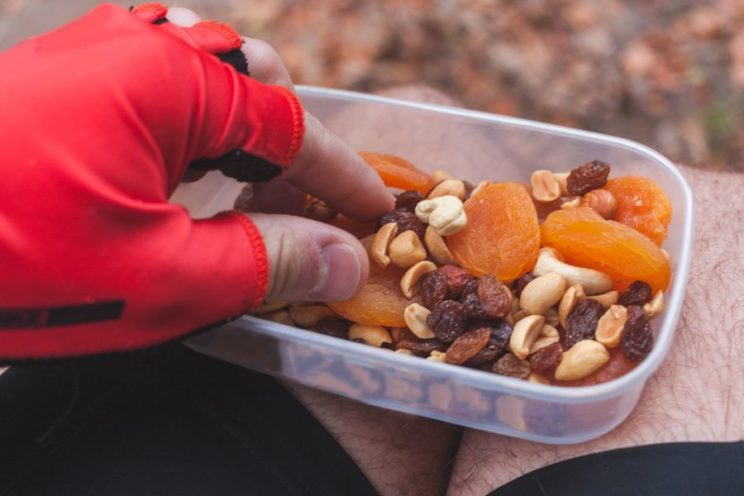
Image: Taranchic (Getty images).[/caption]
It is always important to monitor nutrition; Sobe everything as you progress and start making longer tours. We could say that, after about two hours of pedaling, the body exhausts the glycogen stored in the muscles and liver.
To avoid possible fainting, you will have to replace it eating and drinking conveniently. Otherwise, you will suffer a
Bird And your capacity will go down quickly.
Certainly, the cycatourist tests splash their journey with supplies and assistance points that facilitate the work, but you should not lose sight of a fundamental principle: eat before feeling hunger and drinks before being thirsty.
In these recharge points you will have access to a lot of delicacies, including isotonic drinks and, in the best case, energy bars and gels. However, do not base your diet if weeks before the march you have not taught the body to assimilate this type of food. It is part of the training.
[IRP posts = "9127" name = "How to train the digestive system of the cyclist"]
Train your climbing capacity
It is common for your dorsal to have a chip to record your time. In some tests, the timing is reduced to concrete sections, especially in increases. For this reason, you will have to add an extra speed to your resistance if what you want is to try and
play To be a cyclist.
How to train this discipline? During your workouts, focus on performing repeated climbing intervals of 10 to 20 minutes, at the maximum power that your body is able to maintain in a sustained way. The objective is to accumulate intensity time, so you just have
The recovery between repetitions must be half the duration of them (for example, 5 minutes of recovery between 10 minutes intervals). Here the key is to repeat until you cannot maintain the power or cadence correctly.
Train your power
Although resistance training is important, a cyclist's body is formed by complex systems that supply energy differently from different types of muscles.
A form of
achieve With all of them it is also to train the power, remaining as long as possible above the threshold. Translating, this threshold refers to the maximum capacity that the body has to sustain certain intensity of exercise in a certain time.
These intervals allow multiple gains: more leg strength and greater ease to pay better in any field, whatever.
Each cyclist is a world and there is no fixed standard for the execution of these training. You must analyze where your strengths and weak points lie and then refine these intervals. In general, including this work in your training once or twice a week is all you need to see results and avoid exhaustion or injuries.
If you are one of the people who walk in company, a simple way to improve power is to pull the group and force your body. Remember that a head cyclist has to generate, by means of medium and to roll at the same speed, 30% more power than the cyclists behind.
Train your explosiveness
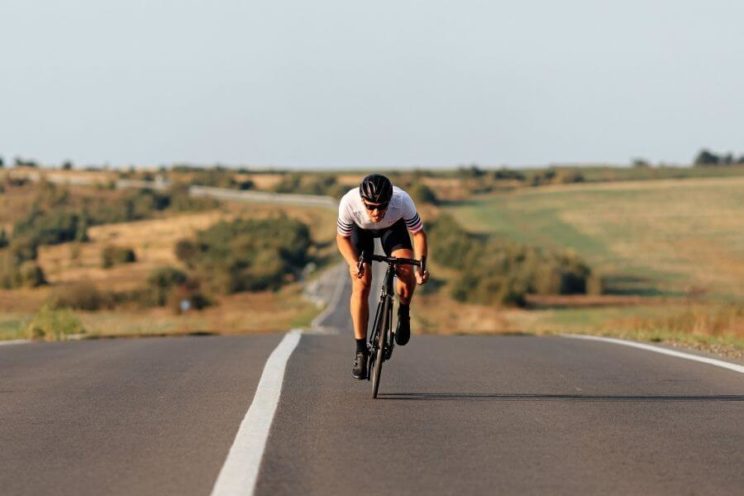
While the longest rise intervals are excellent for developing climbing power, you also need the ability to make rhythm and accelerating changes. This is important to stay in a group during a long tour.
If you develop the power to overcome your threshold in a short effort, you will also be developing the physical shape to quickly recover from those peaks.
You have a thousand ways to train this capacity.
You can try, for example, with 10 power repetitions of 2 minutes (100% of your maximum capacity), with 2 minutes of recovery between each of them, soft pedaling. You will improve the maximum VO2 (the ability of your body to take oxygen from the air and deliver it to the muscle) and most importantly: you will gain capacity to paste an acceleration and recover quickly.
Compensates for the lack of time
It is likely that the cycling test to which you notice your main objective and the longest race of the year. It is also possible that your obligations prevent you from training with the same kilometers and duration. It would be ideal, but it is complicated. One way to compensate for this circumstance is to build consecutive training blocks.
If you cannot pedal six hours in one day, program two days in a row of 3-4 hours with two full days of recovery or relaxed pedaling.
Tips for your participation in a cycling test
Once you have all the work done, the moment of truth comes. Here are some aspects to take into account the day of your debut in a road cycling test.
Preparation
Ded time to study the route: where are the increases or the timed sections, what is their difficulty, where the supplies are found, etc.
Do you need to wear a special food, such as energy gels, bars or isotonic drinks? What is available in supplies?
Have everything prepared for the day of the race: the bike, in perfect condition, and clothing for all types of weather, essential if it will pedal on mountain land early in the morning.
Take some essential tools and spare parts. Do not forget a bomb, patches, trchagadenas and spare cameras. Many events have a mechanical assistance service, but it is best to be as self -sufficient as possible so that, if you have to stop, you can quickly start up.
Finally, move with forecast and avoid haste to reach the starting point of the march. Normally, they are events with a lot of movement of people and vehicles in a small space. Keep that in mind.
Rest
In the days prior to the celebration of the march, trust your training and avoid the temptation to hold a last session to refine. It is better to rest knowing that you have trained hard and that you are prepared for the challenge.
Try to sleep well, although we know that the night prior to this type of event is difficult to reconcile sleep rapidly; Especially, when the test is celebrated away from home.
Don't start too fast
[Captation Id = "Attachment_6993" Align = "Alignnone" Width = "744"]
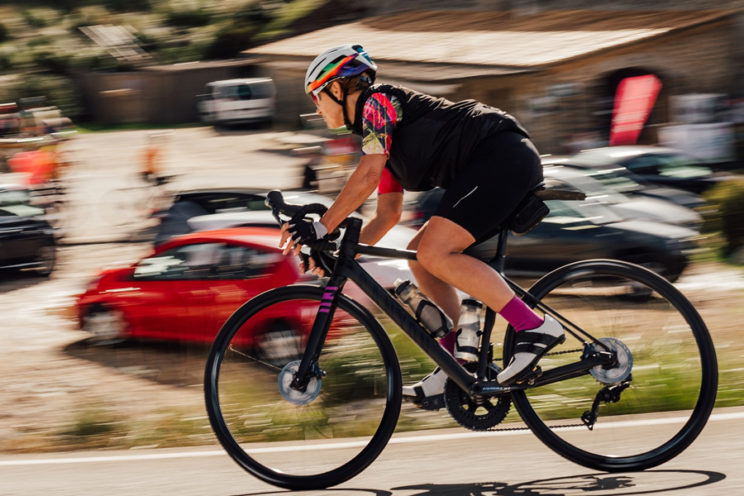
Image: Pixabay[/caption]
In every cycling march, more or less competitive, you will see groups of cyclists willing to go for all from the beginning in order to enter a fast group. Do not fall into the temptation to tighten beyond your possibilities in the first initial kilometers.
Emotion and adrenaline can lead you too much. In that case, you could pay it before the march would really be. It is there where the cards are discovered and each cyclist seeks its own rhythm.
Divide the march into smaller sections
If you have never traveled the distance you have before, dividing it into smaller parts is a good strategy to seem that what awaits you is not so much. You can concentrate, for example, in each segment between supplies, as if it were small intermediate goals. Any other strategy is valid.
Do not lose sight of the front corridor
Cyclist tests are open to cyclists of all levels and condition. They are not divided into categories. It assumes, therefore, that the cyclist that precedes you can have less experience of shooting in a platoon than you.
Take it easy
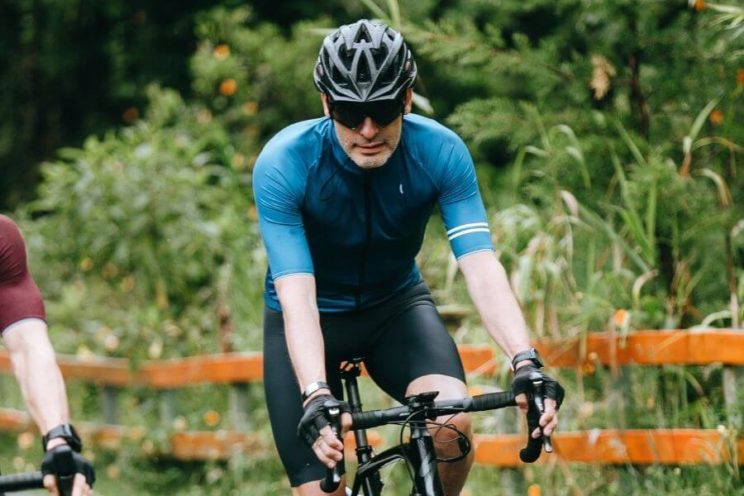
Tour, to put, 160 km with 3,000 m of positive slope requires that you know your limits well. It is not at first when you will notice a significant decrease in your performance, but it is there where you can start digging your grave if you do not save energies. On a long route, it is better to feel that you can squeeze a little more than going to the limit.
As you accumulate kilometers, you will be slower because your power will decrease. Therefore, do not give everything in the first kilometers because most likely you get to the goal crawling.
Never let yourself be dragged by a group whose level does not correspond to you; With so many participants, you will always find one that adapts to your possibilities.
For the rest, a cycatourist march is always a good reason to enjoy the landscape, the company of other cyclists and even of the supplies that you will undergo the way. Keep a conservative strategy in your first event of this nature; You will arrive with good legs and roll better during the entire route.
Feed correctly just before march
In the days before your first cycling march, he normally eats, adding some more carbohydrates, but without passing. Distribute your intake throughout the day and drink a lot of water.
The night before the test, take advantage of a healthy, satiating dinner, but without being excessively filled. When you get up for the march, a good breakfast long before you get on the bike is key to good performance. All calories will be necessary. Do not forget either to hydrate.
Eat and drink correctly during the march
[CAPTION ID = "Attachment_6538" Align = "Alignnone" Width = "744"]
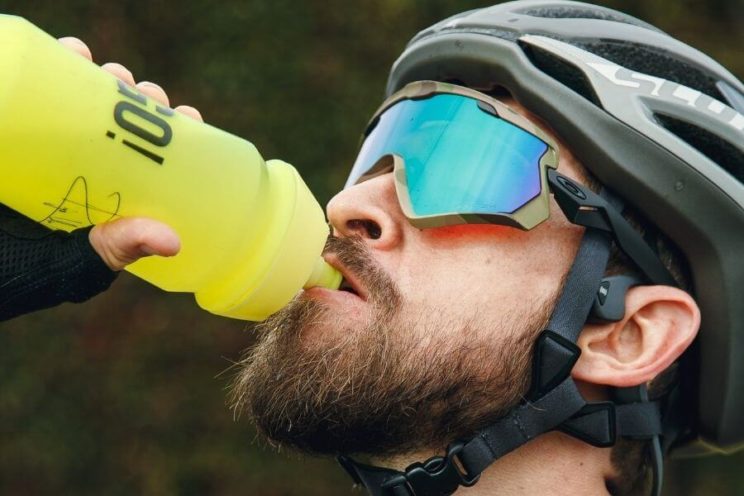
Image: Munbaik - Unspash[/caption]
Once you start up, eat little and often, without spending more than 30 minutes between taking and taking. If you don't feel comfortable eating on the bike, stop. There are those who prefer energy gels, or bars, or small snacks ... the main thing is that you do not eat anything very different from what you usually eat in your training. In this way, the body will not reject it.
The same care must have with the drink. Do not obsess if you see that your drum is running out. It is better to hydrate perfectly and replace it in the next point of supplies, or in a source that you find along the way. Here do not risk sports beverages that you are not used to, for beneficial ones that are. Your stomach could reject them.
Take the most of the provisioning points
The intermediate points of supplies allow you to recharge your drums and your pockets with food. They are also an opportunity to get out of the bike, stretch slightly, do your needs ... five minutes here can help you prevent fatigue. These refueling points are usually very tempting, but avoid passing
of braking.
Enjoy yourself
[Caption id = "Attachment_8733" Align = "Alignnone" Width = "744"]
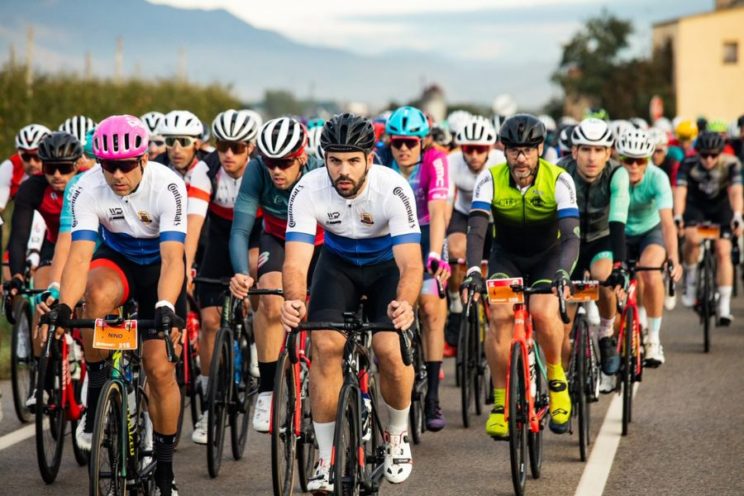
Image: Being Otter Europe.[/caption]
Usually, cycling tests are very fun tours. Each organization tries to squeeze the territory to the fullest to offer a differential experience to the cycling community. Why not take advantage of it?
And if yours is to challenge your own limits, each test has more than plenty of land to test your performance.
In short, the objective is to always enjoy and complete the march with dignity.
 Image: Taranchic (Getty images).[/caption]
It is always important to monitor nutrition; Sobe everything as you progress and start making longer tours. We could say that, after about two hours of pedaling, the body exhausts the glycogen stored in the muscles and liver.
To avoid possible fainting, you will have to replace it eating and drinking conveniently. Otherwise, you will suffer a Bird And your capacity will go down quickly.
Certainly, the cycatourist tests splash their journey with supplies and assistance points that facilitate the work, but you should not lose sight of a fundamental principle: eat before feeling hunger and drinks before being thirsty.
In these recharge points you will have access to a lot of delicacies, including isotonic drinks and, in the best case, energy bars and gels. However, do not base your diet if weeks before the march you have not taught the body to assimilate this type of food. It is part of the training.
[IRP posts = "9127" name = "How to train the digestive system of the cyclist"]
Image: Taranchic (Getty images).[/caption]
It is always important to monitor nutrition; Sobe everything as you progress and start making longer tours. We could say that, after about two hours of pedaling, the body exhausts the glycogen stored in the muscles and liver.
To avoid possible fainting, you will have to replace it eating and drinking conveniently. Otherwise, you will suffer a Bird And your capacity will go down quickly.
Certainly, the cycatourist tests splash their journey with supplies and assistance points that facilitate the work, but you should not lose sight of a fundamental principle: eat before feeling hunger and drinks before being thirsty.
In these recharge points you will have access to a lot of delicacies, including isotonic drinks and, in the best case, energy bars and gels. However, do not base your diet if weeks before the march you have not taught the body to assimilate this type of food. It is part of the training.
[IRP posts = "9127" name = "How to train the digestive system of the cyclist"]
 While the longest rise intervals are excellent for developing climbing power, you also need the ability to make rhythm and accelerating changes. This is important to stay in a group during a long tour.
If you develop the power to overcome your threshold in a short effort, you will also be developing the physical shape to quickly recover from those peaks.
You have a thousand ways to train this capacity.
You can try, for example, with 10 power repetitions of 2 minutes (100% of your maximum capacity), with 2 minutes of recovery between each of them, soft pedaling. You will improve the maximum VO2 (the ability of your body to take oxygen from the air and deliver it to the muscle) and most importantly: you will gain capacity to paste an acceleration and recover quickly.
While the longest rise intervals are excellent for developing climbing power, you also need the ability to make rhythm and accelerating changes. This is important to stay in a group during a long tour.
If you develop the power to overcome your threshold in a short effort, you will also be developing the physical shape to quickly recover from those peaks.
You have a thousand ways to train this capacity.
You can try, for example, with 10 power repetitions of 2 minutes (100% of your maximum capacity), with 2 minutes of recovery between each of them, soft pedaling. You will improve the maximum VO2 (the ability of your body to take oxygen from the air and deliver it to the muscle) and most importantly: you will gain capacity to paste an acceleration and recover quickly.
 Image: Pixabay[/caption]
In every cycling march, more or less competitive, you will see groups of cyclists willing to go for all from the beginning in order to enter a fast group. Do not fall into the temptation to tighten beyond your possibilities in the first initial kilometers.
Emotion and adrenaline can lead you too much. In that case, you could pay it before the march would really be. It is there where the cards are discovered and each cyclist seeks its own rhythm.
Image: Pixabay[/caption]
In every cycling march, more or less competitive, you will see groups of cyclists willing to go for all from the beginning in order to enter a fast group. Do not fall into the temptation to tighten beyond your possibilities in the first initial kilometers.
Emotion and adrenaline can lead you too much. In that case, you could pay it before the march would really be. It is there where the cards are discovered and each cyclist seeks its own rhythm.
 Tour, to put, 160 km with 3,000 m of positive slope requires that you know your limits well. It is not at first when you will notice a significant decrease in your performance, but it is there where you can start digging your grave if you do not save energies. On a long route, it is better to feel that you can squeeze a little more than going to the limit.
As you accumulate kilometers, you will be slower because your power will decrease. Therefore, do not give everything in the first kilometers because most likely you get to the goal crawling.
Never let yourself be dragged by a group whose level does not correspond to you; With so many participants, you will always find one that adapts to your possibilities.
For the rest, a cycatourist march is always a good reason to enjoy the landscape, the company of other cyclists and even of the supplies that you will undergo the way. Keep a conservative strategy in your first event of this nature; You will arrive with good legs and roll better during the entire route.
Tour, to put, 160 km with 3,000 m of positive slope requires that you know your limits well. It is not at first when you will notice a significant decrease in your performance, but it is there where you can start digging your grave if you do not save energies. On a long route, it is better to feel that you can squeeze a little more than going to the limit.
As you accumulate kilometers, you will be slower because your power will decrease. Therefore, do not give everything in the first kilometers because most likely you get to the goal crawling.
Never let yourself be dragged by a group whose level does not correspond to you; With so many participants, you will always find one that adapts to your possibilities.
For the rest, a cycatourist march is always a good reason to enjoy the landscape, the company of other cyclists and even of the supplies that you will undergo the way. Keep a conservative strategy in your first event of this nature; You will arrive with good legs and roll better during the entire route.
 Image: Munbaik - Unspash[/caption]
Once you start up, eat little and often, without spending more than 30 minutes between taking and taking. If you don't feel comfortable eating on the bike, stop. There are those who prefer energy gels, or bars, or small snacks ... the main thing is that you do not eat anything very different from what you usually eat in your training. In this way, the body will not reject it.
The same care must have with the drink. Do not obsess if you see that your drum is running out. It is better to hydrate perfectly and replace it in the next point of supplies, or in a source that you find along the way. Here do not risk sports beverages that you are not used to, for beneficial ones that are. Your stomach could reject them.
Image: Munbaik - Unspash[/caption]
Once you start up, eat little and often, without spending more than 30 minutes between taking and taking. If you don't feel comfortable eating on the bike, stop. There are those who prefer energy gels, or bars, or small snacks ... the main thing is that you do not eat anything very different from what you usually eat in your training. In this way, the body will not reject it.
The same care must have with the drink. Do not obsess if you see that your drum is running out. It is better to hydrate perfectly and replace it in the next point of supplies, or in a source that you find along the way. Here do not risk sports beverages that you are not used to, for beneficial ones that are. Your stomach could reject them.
 Image: Being Otter Europe.[/caption]
Usually, cycling tests are very fun tours. Each organization tries to squeeze the territory to the fullest to offer a differential experience to the cycling community. Why not take advantage of it?
And if yours is to challenge your own limits, each test has more than plenty of land to test your performance.
In short, the objective is to always enjoy and complete the march with dignity.
Image: Being Otter Europe.[/caption]
Usually, cycling tests are very fun tours. Each organization tries to squeeze the territory to the fullest to offer a differential experience to the cycling community. Why not take advantage of it?
And if yours is to challenge your own limits, each test has more than plenty of land to test your performance.
In short, the objective is to always enjoy and complete the march with dignity.












